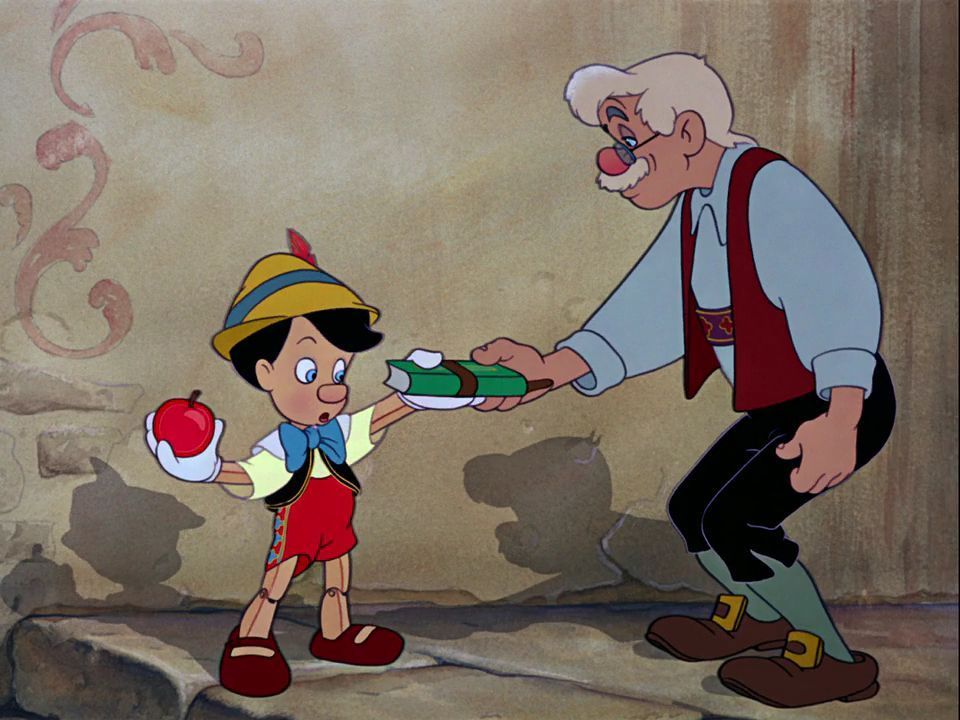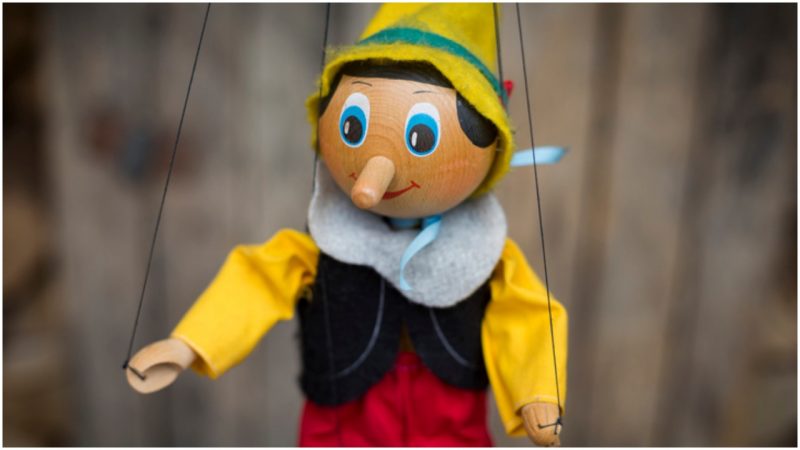What does Pinocchio imply? This timeless story, a beloved story for generations, delves into profound themes of fact, lies, and the pursuit of self-improvement. Past the charming puppet, the story resonates with highly effective messages relevant to fashionable life, encouraging us to query our motivations and actions. This exploration unravels the layers of which means inside this iconic narrative.
Pinocchio, a basic story, embodies the idea of honesty and penalties. Discovering your self in a troublesome spot, maybe “up the creek and not using a paddle,” like this , highlights the significance of truthfulness, mirroring the journey of the wood boy. Finally, the ethical of the story of Pinocchio stays: honesty is the most effective coverage.
Pinocchio’s journey is a charming allegory for private progress. His struggles with fact and deceit mirror the challenges all of us face in navigating the complexities of life. The story’s enduring recognition speaks volumes about its capability to attach with audiences on a basic degree, prompting reflection on the importance of integrity and the rewards of sincere residing. This evaluation will delve into the varied interpretations of the character’s transformation, revealing the core rules at play.
Pinocchio, the wood puppet delivered to life by a fairy, is greater than only a kids’s story. Beneath the floor of his adventures lies a wealthy tapestry of symbolism and societal commentary. Understanding what Pinocchio means entails exploring his journey, the teachings he learns, and the cultural context by which the story was created. This exploration will reveal deeper meanings that resonate with readers of all ages.

The Core Which means of Pinocchio: A Journey of Self-Discovery
At its coronary heart, Pinocchio is a narrative about self-improvement and the significance of fact. Pinocchio’s transformation from a mischievous, dishonest puppet to a accountable, sincere boy displays the challenges of private progress. His struggles to beat his flaws and stay as much as the expectations positioned upon him are relatable, making the story related throughout generations. This inner wrestle mirrors the human situation, illustrating the trail from ignorance to enlightenment.
The Position of Honesty and Duty
Honesty is a central theme. Pinocchio’s lies lead him to a collection of misfortunes, demonstrating the results of dishonesty. His experiences with the fox and the cat spotlight the hazards of associating with deceitful people. The story underscores the significance of integrity and accountability in navigating life’s complexities. This side is a strong reminder of the moral compass we must always all try to domesticate.
The Symbolism Behind Pinocchio’s Options
Pinocchio’s bodily attributes and traits carry symbolic weight. His wood nature, for example, represents his preliminary lack of character. His nostril, which grows longer with every lie, serves as a visible metaphor for the results of dishonesty. This bodily manifestation of falsehood gives a strong visible reminder of the significance of fact.
Pinocchio, a basic story, embodies the idea of honesty and fact. Whereas exploring the which means behind Pinocchio, you may additionally end up intrigued by a associated crossword puzzle, just like the “do not cry for me singer crossword” here. Finally, the core message of Pinocchio stays the significance of truthfulness and integrity.
Past the Literal: Exploring Deeper Symbolism
Past the plain symbolism, Pinocchio might be interpreted as a commentary on societal pressures and expectations. Pinocchio’s need for acceptance and belonging is mirrored within the wishes of many people all through historical past. The story might be seen as a mirrored image on the necessity for self-reliance and the significance of particular person progress, fairly than merely conforming to societal expectations.
The journey is about turning into greater than the perceived expectations.
The Cultural Context of Pinocchio: What Does Pinocchio Imply
Understanding Pinocchio requires inspecting the historic and cultural context of its creation. Printed in 1883, the story displays the societal values and considerations of that period. The story’s themes of morality and societal expectations present perception into the social panorama of the time. The writer’s background gives context for understanding the views offered within the story.
Pinocchio, a beloved kids’s story, embodies the idea of honesty and the results of dishonesty. Exploring the nuances of fact, the significance of being sincere, and the potential for change is central to the story. This resonates with the thought of honesty as a core precept, very like the varied four-letter phrases that begin with ‘R’—like ‘proper’, ‘ruth’, or ‘uncommon’—every possessing their very own distinctive which means and significance inside a broader vocabulary.
4 letter words that start with r. Finally, Pinocchio’s journey highlights the significance of integrity and the lasting influence of truthful decisions.
Historic Influences on the Story
The writer’s background, experiences, and the societal norms of the time tremendously influenced the story. This context gives a deeper understanding of the motivations behind Pinocchio’s actions and the messages embedded throughout the narrative. [Image: Illustration of the time period in which Pinocchio was written, showcasing the societal values and concerns of the era] This context makes the story extra profound and fascinating.
Pinocchio, a basic story, embodies the idea of honesty and fact. Crucially, it typically highlights the significance of studying from errors, just like the expertise of navigating a brand new ability, like studying to “reduce your tooth” in a brand new discipline. Defining “cut your teeth” is about gaining preliminary expertise and dealing with challenges, a journey mirroring Pinocchio’s private progress.
Finally, understanding Pinocchio’s story is about recognizing the worth of perseverance and the results of dishonesty.
Pinocchio and Fashionable Relevance
Even at this time, Pinocchio continues to resonate with audiences. Its themes of honesty, accountability, and private progress stay related in a world dealing with quite a few challenges. The story’s message of the significance of integrity and the results of dishonesty present helpful classes for people throughout all ages and walks of life. The story transcends the superficial and touches upon common themes.
Classes for Right now’s World, What does pinocchio imply
The rules of honesty and accountability in Pinocchio might be utilized to numerous elements of recent life. The story gives a helpful framework for navigating the complexities of recent society. [See also: How to Improve Your Personal Ethics] The rules of self-improvement and the significance of fact are enduring values that proceed to form people and communities at this time.

Conclusion: A Lasting Legacy
Pinocchio is greater than only a kids’s story; it is a timeless story with enduring relevance. By exploring its symbolism, cultural context, and fashionable relevance, we acquire a deeper appreciation for the story’s multifaceted nature. The teachings of honesty, accountability, and self-improvement proceed to encourage and information us. [Image: Illustration of Pinocchio in various stages of his journey, emphasizing his transformation.] The story continues to captivate readers throughout generations.
Additional Exploration: Delve deeper into the which means of Pinocchio by exploring associated works of literature or delving into the historical past of kids’s literature. [See also: Top 10 Children’s Books of All Time] Share your ideas and insights within the feedback beneath!
Pinocchio, a basic story, embodies the idea of honesty and fact. Understanding the core which means of the story requires trying past the literal. Exploring related themes, like the facility of truthful phrases, typically reveals hidden meanings. For instance, consider the various four-letter phrases beginning with ‘b’ 4 letter words starting b that might be used to explain Pinocchio’s actions.
Finally, the story of Pinocchio is concerning the significance of integrity and residing a life grounded in reality.
In conclusion, Pinocchio’s journey, crammed with classes in honesty and self-improvement, stays related at this time. His struggles and triumphs provide a strong framework for understanding the significance of integrity in shaping our lives. This exploration of Pinocchio’s which means serves as a reminder that even within the face of adversity, the pursuit of fact and the striving for private progress are in the end worthwhile endeavors.
The story’s enduring enchantment lies in its capability to resonate with common truths, encouraging us to mirror on our personal values and actions.
FAQ Part
What are the completely different interpretations of Pinocchio’s nostril rising?
Pinocchio’s nostril rising is commonly interpreted as a visible illustration of the results of mendacity. It serves as a stark reminder of the repercussions of dishonesty and the significance of telling the reality. Totally different interpretations additionally think about it as a logo of Pinocchio’s emotional state and a metaphor for the rising consciousness of his personal actions and the influence of his lies.
How does the position of Geppetto contribute to the which means of the story?
Geppetto, Pinocchio’s creator, embodies the significance of parental steering and unconditional love. His unwavering perception in Pinocchio, even via his quite a few transgressions, highlights the facility of nurturing and forgiveness. Geppetto’s persistence and compassion are central to the narrative, illustrating the significance of mentorship and the enduring energy of human connection.
What are the broader social and ethical classes that Pinocchio conveys?
Past the non-public struggles of Pinocchio, the story explores broader social and ethical classes. It emphasizes the importance of integrity, the significance of accountability, and the necessity for self-improvement. The story’s themes of perseverance, compassion, and the pursuit of 1’s objectives resonate with readers of all ages, providing a timeless message concerning the human situation.

